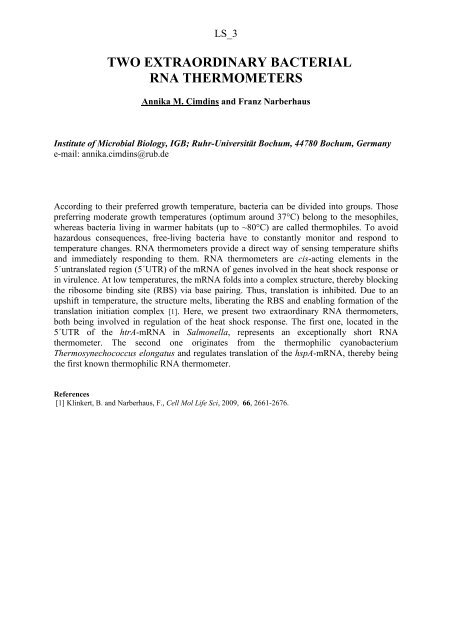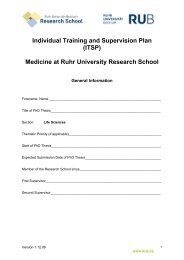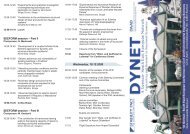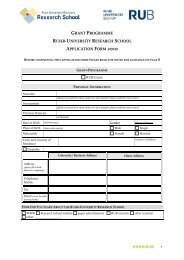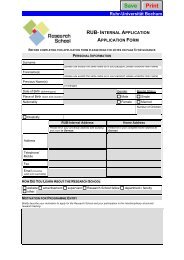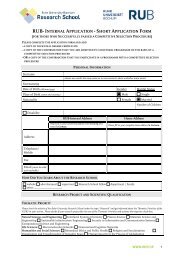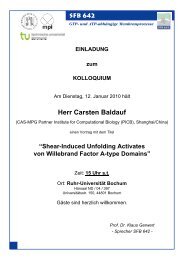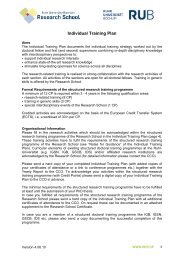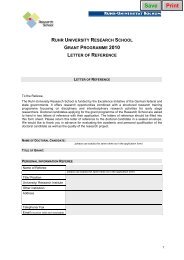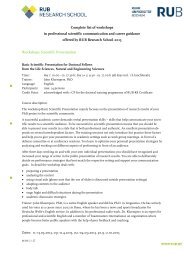Section Days abstract book 2010.indd - RUB Research School ...
Section Days abstract book 2010.indd - RUB Research School ...
Section Days abstract book 2010.indd - RUB Research School ...
You also want an ePaper? Increase the reach of your titles
YUMPU automatically turns print PDFs into web optimized ePapers that Google loves.
LS_3<br />
TWO EXTRAORDINARY BACTERIAL<br />
RNA THERMOMETERS<br />
Annika M. Cimdins and Franz Narberhaus<br />
Institute of Microbial Biology, IGB; Ruhr-Universität Bochum, 44780 Bochum, Germany<br />
e-mail: annika.cimdins@rub.de<br />
According to their preferred growth temperature, bacteria can be divided into groups. Those<br />
preferring moderate growth temperatures (optimum around 37°C) belong to the mesophiles,<br />
whereas bacteria living in warmer habitats (up to ~80°C) are called thermophiles. To avoid<br />
hazardous consequences, free-living bacteria have to constantly monitor and respond to<br />
temperature changes. RNA thermometers provide a direct way of sensing temperature shifts<br />
and immediately responding to them. RNA thermometers are cis-acting elements in the<br />
5´untranslated region (5´UTR) of the mRNA of genes involved in the heat shock response or<br />
in virulence. At low temperatures, the mRNA folds into a complex structure, thereby blocking<br />
the ribosome binding site (RBS) via base pairing. Thus, translation is inhibited. Due to an<br />
upshift in temperature, the structure melts, liberating the RBS and enabling formation of the<br />
translation initiation complex [1]. Here, we present two extraordinary RNA thermometers,<br />
both being involved in regulation of the heat shock response. The first one, located in the<br />
5´UTR of the htrA-mRNA in Salmonella, represents an exceptionally short RNA<br />
thermometer. The second one originates from the thermophilic cyanobacterium<br />
Thermosynechococcus elongatus and regulates translation of the hspA-mRNA, thereby being<br />
the first known thermophilic RNA thermometer.<br />
References<br />
[1] Klinkert, B. and Narberhaus, F., Cell Mol Life Sci, 2009, 66, 2661-2676.


